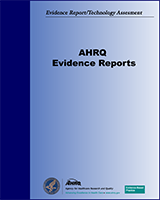NCBI Bookshelf. A service of the National Library of Medicine, National Institutes of Health.
ECRI Health Technology Assessment Group. Diagnosis and Treatment of Swallowing Disorders (Dysphagia) in Acute-Care Stroke Patients. Rockville (MD): Agency for Health Care Policy and Research (US); 1999 Jul. (Evidence Reports/Technology Assessments, No. 8.)
This publication is provided for historical reference only and the information may be out of date.

Diagnosis and Treatment of Swallowing Disorders (Dysphagia) in Acute-Care Stroke Patients.
Show detailsBecause the cumulative number of patients with pneumonia increases with time, it is inappropriate to directly compare the pneumonia rates reported by studies that used different followup times. To allow us to make such comparisons, we derived a time curve that would allow us to adjust pneumonia rates from studies that employed different followup times to a single common time. Analysis of available data on the incidence of pneumonia in patients hospitalized for stroke suggests that pneumonia risk decreases substantially after the first week or two after the stroke. Evidence Table 26 presents data on pneumonia rates in patient groups not getting swallow therapy. Odderson's trial (Odderson, Keaton and McKenna, 1995), which had a mean followup of 1 week, had a pre-program pneumonia rate of 6.7 percent. Young's trial (Young and Durant-Jones, 1990), which had a mean followup of 4.4 weeks, had a pneumonia rate of 13 percent. This suggests a steep fall-off in pneumonia rates with time but other differences between the two trials could account for some or all of the effect. Therefore, one needs a single trial reporting pneumonia rates at two or more different times in order to determine the effect of time on pneumonia rate.
The most detailed data of this type were reported by Davenport, Dennis and Wellwood (1996). We determined the pneumonia rate as a function of time by measuring the graph published in their report. Although they used the broader criterion of chest infection, we assumed that the narrower criterion of pneumonia would follow the same time pattern following stroke. That is, the absolute number of diseased patients would be different by the two criteria, but the proportion of the cumulative total that occurred within a given time interval would be approximately the same for both criteria.
Twelve points were measured, representing times of 0 to 27.5 days post-stroke. Data were entered into a spreadsheet (Excel 97, Microsoft Corp., Redmond WA) for fitting and plotting. We tested four different models: a single exponential, a single exponential plus constant, a single-exponential fit to the first 12 points, and a power series. Exponentials were fitted automatically using the linear regression function of the spreadsheet, while the power series was fitted using SPSS software (version 7.5, SPSS Inc., Chicago). The power series [y = B0 + Bl ln(t), where B0 and B1 are constants and t is time] gave the closest fit to the Davenport et al. data, both by subjective (visual inspection) and objective (RMS error) methods. Therefore, correction terms were derived from the power series results.
To adjust rates that are figured at different followup times, the ratio of expected prevalences at each time can be calculated. This is an approximate correction because the followup times are expressed as means.
- Appendix D. Time Distribution of Pneumonia Cases in Acute Stroke Patients - Diag...Appendix D. Time Distribution of Pneumonia Cases in Acute Stroke Patients - Diagnosis and Treatment of Swallowing Disorders (Dysphagia) in Acute-Care Stroke Patients
- Appendix B: Study Questions: Refinement by Experts - Management of AcneAppendix B: Study Questions: Refinement by Experts - Management of Acne
Your browsing activity is empty.
Activity recording is turned off.
See more...